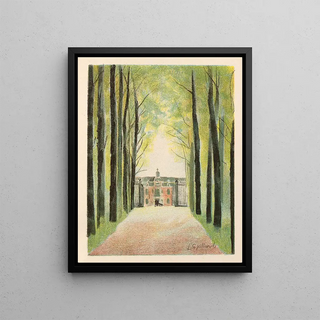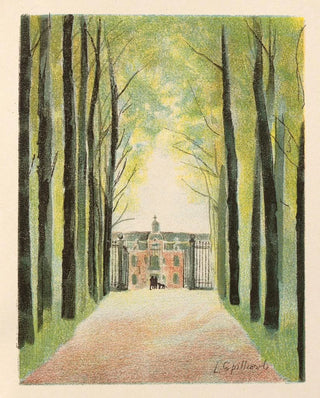Art print | When Nanette Was Lost, Plate 3 - Léon Spilliaert


View from behind

Frame (optional)
"Au temps que Nanette était perdue pl. 3" by Léon Spilliaert captures a universe that is both mysterious and introspective, where each brushstroke seems imbued with emotion. This piece, emblematic of the Belgian artist, takes the viewer on a unique visual journey, where melancholy and beauty intertwine harmoniously. Spilliaert, with his distinctive style, manages to seize fleeting moments of life, inviting deep reflection on existence and ephemerality. Through this art print, the viewer is encouraged to explore not only the work but also the soul of the artist, revealed with subtlety and depth.
Style and uniqueness of the artwork
The piece stands out for its bold use of light and shadow, creating an atmosphere that is both dreamlike and unsettling. The dark tones, combined with flashes of light, evoke a palpable tension, as if the painting itself breathes. Spilliaert plays with shapes and lines, giving his characters an almost spectral dimension. In "Au temps que Nanette était perdue pl. 3," the central figure appears lost in thought, capturing a moment of vulnerability. This depiction of isolation and contemplation is a recurring feature in Spilliaert's work, who manages to transform complex emotions into a powerful visual expression. The harmony between composition and color palette enhances the emotional impact of the piece, making each viewing an immersive experience.
The artist and his influence
Léon Spilliaert, born in 1881 in Ostend, is often regarded as a precursor of expressionism. His artistic training, marked by various influences, allowed him to develop a style that is uniquely his own, oscillating between symbolism and impressionism. His fascination with coastal landscapes and nocturnal scenes fueled a body of work rich in emotion and personal reflection. Spilliaert established himself as a major figure in Belgian art, influencing many artists

Matte finish

View from behind

Frame (optional)
"Au temps que Nanette était perdue pl. 3" by Léon Spilliaert captures a universe that is both mysterious and introspective, where each brushstroke seems imbued with emotion. This piece, emblematic of the Belgian artist, takes the viewer on a unique visual journey, where melancholy and beauty intertwine harmoniously. Spilliaert, with his distinctive style, manages to seize fleeting moments of life, inviting deep reflection on existence and ephemerality. Through this art print, the viewer is encouraged to explore not only the work but also the soul of the artist, revealed with subtlety and depth.
Style and uniqueness of the artwork
The piece stands out for its bold use of light and shadow, creating an atmosphere that is both dreamlike and unsettling. The dark tones, combined with flashes of light, evoke a palpable tension, as if the painting itself breathes. Spilliaert plays with shapes and lines, giving his characters an almost spectral dimension. In "Au temps que Nanette était perdue pl. 3," the central figure appears lost in thought, capturing a moment of vulnerability. This depiction of isolation and contemplation is a recurring feature in Spilliaert's work, who manages to transform complex emotions into a powerful visual expression. The harmony between composition and color palette enhances the emotional impact of the piece, making each viewing an immersive experience.
The artist and his influence
Léon Spilliaert, born in 1881 in Ostend, is often regarded as a precursor of expressionism. His artistic training, marked by various influences, allowed him to develop a style that is uniquely his own, oscillating between symbolism and impressionism. His fascination with coastal landscapes and nocturnal scenes fueled a body of work rich in emotion and personal reflection. Spilliaert established himself as a major figure in Belgian art, influencing many artists






